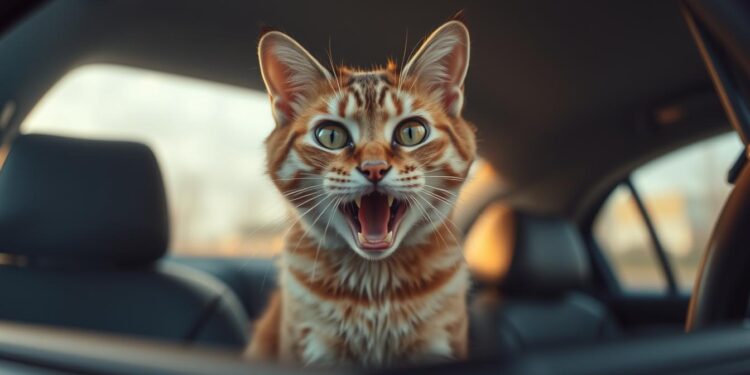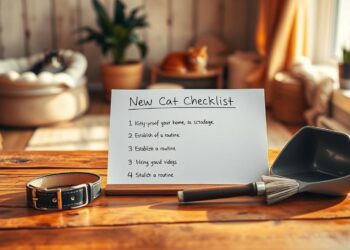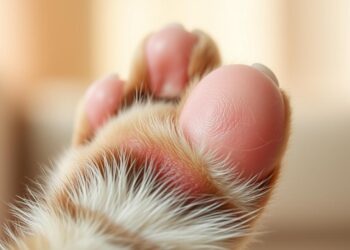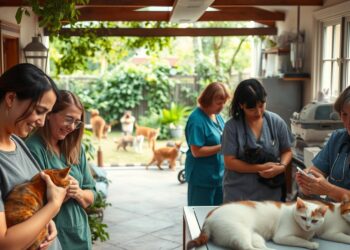You’ve probably experienced it – you’re on a road trip with your feline friend, and they’re panting heavily. It’s a worrying sight, and you can’t help but wonder if they’re okay. The truth is, cats don’t usually pant like dogs do, so when they do, it’s a sign that something’s amiss.

Panting during car travel can be a sign of stress or anxiety, and in some cases, it might indicate an underlying medical condition. As a responsible cat owner, it’s essential to understand the reasons behind this behavior and learn how to make your cat more comfortable during car rides.
This article will guide you through the common causes of cat panting in the car and provide you with practical tips on how to help your feline companion feel more at ease.
Why Your Cat Is Panting in the Car: Common Causes
Cat panting during car travel can be alarming, but understanding the causes can help you address the issue effectively. When your cat pants in the car, it could be due to several factors. Understanding these reasons is crucial to providing the necessary care and comfort for your pet.
Stress and Anxiety
One of the primary reasons your cat might be panting in the car is stress and anxiety. The unfamiliar environment and motion of the vehicle can cause your cat to feel uneasy, leading to panting. Reducing stress is key to making your cat more comfortable during car rides.
Overheating and Temperature Issues
Overheating is another common cause of panting in cats during car travel. If the car’s temperature is not well-managed, your cat can quickly become overheated. Ensuring proper ventilation and maintaining a comfortable temperature can help mitigate this issue.

Motion Sickness in Cats
Just like humans, cats can experience motion sickness during car travel. This discomfort can lead to panting among other symptoms. Identifying the signs of motion sickness early can help you take appropriate measures to alleviate your cat’s discomfort.
Underlying Health Conditions
In some cases, panting during car travel can be a sign of an underlying health condition. Conditions such as heart disease or respiratory issues can cause your cat to pant more than usual. If you suspect an underlying health issue, it’s crucial to consult with a veterinarian to rule out any serious conditions.
| Cause | Symptoms | Solution |
|---|---|---|
| Stress and Anxiety | Panting, restlessness | Reduce stress with calming aids |
| Overheating | Panting, drooling | Maintain a comfortable car temperature |
| Motion Sickness | Panting, vomiting | Use motion sickness remedies |
| Underlying Health Conditions | Persistent panting, other symptoms | Consult a veterinarian |
By understanding the common causes of cat panting in the car, you can take the necessary steps to ensure your cat’s comfort and safety during travel.
Cat Panting in Car: Effective Solutions and Prevention
Cat panting in the car can be distressing, but there are several effective solutions you can try to make your cat more comfortable during travel.
Creating a Comfortable Travel Environment
One of the key factors in reducing your cat’s stress and panting is to create a comfortable travel environment. Using a carrier or a familiar item like a blanket can provide your cat with a sense of security. Ensure the carrier is well-ventilated and comfortable.
- Place a familiar toy or blanket in the carrier to comfort your cat.
- Keep the carrier in a stable position to reduce motion sickness.

Temperature Management During Travel
Managing the car’s temperature is crucial to prevent overheating. Keep the car cool by using air conditioning or rolling down the windows slightly.
Tips for Temperature Management:
- Never leave your cat alone in a parked car, as it can quickly become too hot.
- Use sunshades on the windows to block direct sunlight.
Calming Techniques and Products
There are various calming techniques and products available that can help reduce your cat’s stress and panting. Pheromone sprays or calming collars can be particularly effective.
- Use pheromone sprays in the carrier or car to create a calming environment.
- Consider a calming collar designed for cats to wear during travel.
When to Seek Veterinary Assistance
If your cat’s panting persists or is accompanied by other concerning symptoms like drooling, lethargy, or loss of appetite, it’s crucial to seek veterinary assistance. Your veterinarian can provide guidance on whether your cat’s condition is related to travel stress or an underlying health issue.
Always consult with your veterinarian if you’re unsure about your cat’s health or if the panting continues despite trying the above solutions.
Conclusion
As a cat owner, you’ve likely encountered the stressful situation of your cat panting in the car. By understanding the common causes, such as stress, overheating, and underlying health conditions, you can take proactive steps to ensure a more comfortable travel experience for your feline companion.
Effective solutions include creating a comfortable travel environment, managing temperature, and utilizing calming techniques and products. By being aware of your cat’s needs and taking the necessary precautions, you can reduce the likelihood of panting and make car travel less stressful for your cat.
By following these cat care tips, you can help ensure the well-being of your cat during car travel, providing a cat panting in car summary: stay calm, keep your cat cool, and be prepared. This will make car travel a more enjoyable experience for both you and your cat.







